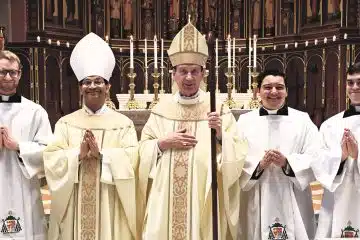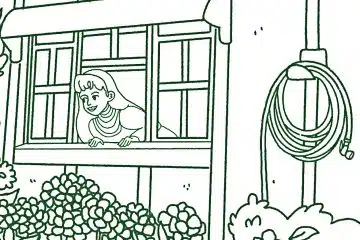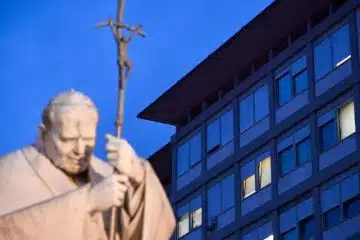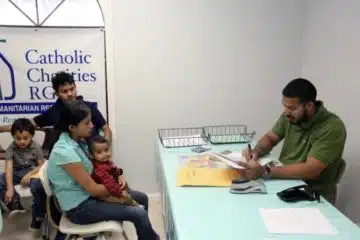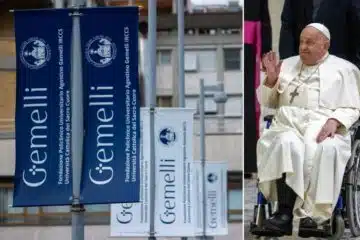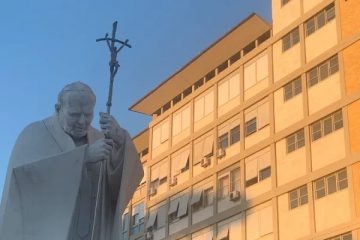Welcoming the stranger through refugees resettlement
October 2, 2012
By Shannon Ryan
“Lord, when have we seen You hungry, and fed You; thirsty, and given You drink? When have we seen You a stranger, and taken You in? Or naked, and clothed You?”
These verses from Matthew 25 inspire several organizations that bring refugees to live legally, and safely, in Ohio.
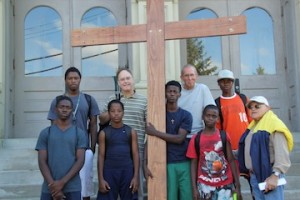
Catholic Charities of SouthWestern Ohio has provided assistance to refugees for more than 30 years. They began this work in the 1970’s when thousands of Vietnamese families resettled in the United States from their war-torn country. As a result of genocide, government oppression, and religious persecution around the world, Catholic Charities has provided aid to large communities from the Balkans, Burundi, Bhutan, and other nations where tens of thousands of refugees live in U.N. camps outside the borders of their homeland. Resettlement Director Norm Solomon oversees the efforts to provide intensive case management and administer government financial support for their first few months in the United States. However, once the basic needs of food, shelter, and clothing are seen to, a host of other needs must be met to ensure the resettlement process continues smoothly.
At this point “we have to engage other agencies to become proactive,” Solomon states. Because of the language difficulties and cultural differences, even those refugees who have secured housing and jobs require continued English classes and other social services.
A recent study by University of Dayton sociologists Theo and Linda Majka, et al, found that “refugees, who often come to the U.S. from traumatic environments with vast cultural differences, experience significant mental health issues and need more education about Western cultural norms and expectations.” These needs can differ from those of planned immigrants who have months or years to prepare for their relocation.
Solomon agrees, on a case-by-case basis. “At-risk people, namely the poor and underserved, often need mental health services. Our system doesn’t often address this as a primary need,” said Solomon.
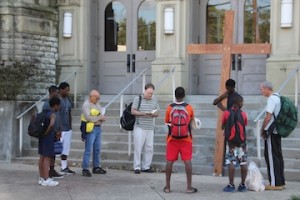
In Dayton, Regina Estep of Catholic Social Services of the Miami Valley stresses that although her organization offers an array of services for refugees including basic necessities, transportation, health care screenings, language classes, and assistance with school registrations, “it’s not a one-size-fits-all program.”
Ongoing visitation and follow up are crucial to address any problems that may arise. Catholic Social Services coordinates with the University of Dayton, city of Dayton’s “Welcome Dayton” initiative, and other organizations to arrange long-term ESL classes, interpreters, medical services, and employment assistance.
St. Leo the Great parish in North Fairmount has made “welcoming the stranger” its mission. When asked how they have had such success in embracing the hundreds of refugees in their parish, Stephanie Sepate, business manager at St. Leo’s responded, “We believe that’s how God wants us to be working. We are their voice. This is how God wants us (at St. Leo’s) to build His kingdom.”
Refugees largely praise churches and other faith-based organizations that offer support. Although their needs are many, Dorothy Balser at Catholic Social Services of the Miami Valley notes that most refugees show tremendous tenacity and resiliency, adjusting from communal life in camps to living independently in an urban society. “The primary goal is self-sufficiency,” she stateed, “and also community integration.”
“Effectively speaking and understanding English is widely believed to be the key to successfully resettling,” claims Sepate.
Balser agreed. Refugees must have a solid grasp of the language to apply for jobs, communicate with teachers and medical personnel, and perform everyday tasks such as grocery shopping and banking. The UD study validates this claim, noting that the language barrier is the single greatest obstacle to better integration into the community. Other areas for continued improvement include better coordination of social services, more access to interpreters, more information about available services and housing options, better education about cultural norms, expectations, and legal rights, and greater awareness of mental health issues and how to address them.
Balser appeals to those who have a heart for welcoming the stranger to reach out to local refugees through our community organizations and parishes, to offer both financial and practical support. “Whenever you did this for one of these, the least of My brothers, you did it for Me.”



